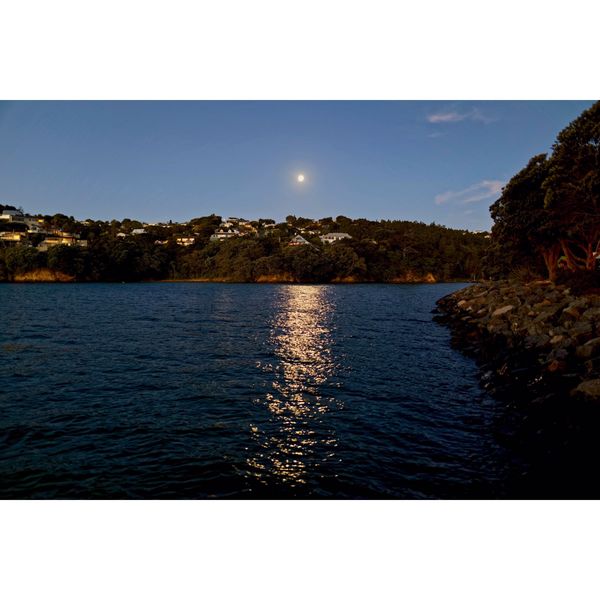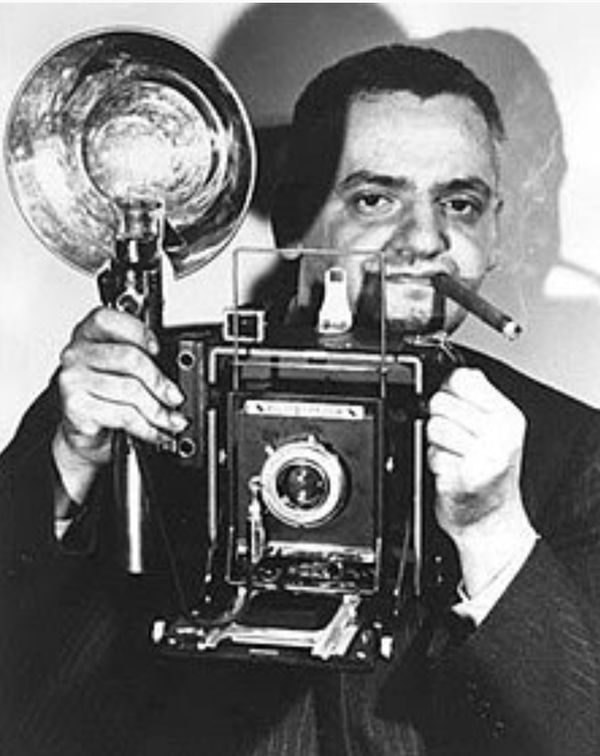Posts for: GrahamO
Feb 21, 2019 16:56:59 #
Streets wrote:
You might get close to equalling a 100 MP full frame sensor IF you have a Rollei 2.8 Planar equipped camera shooting Microfile film and have a perfectly registered printer capable of 1200 lines/mm.
Thank you for taking my bait and providing a scientific dissertation.
Feb 21, 2019 15:26:22 #
wrangler5 wrote:
I preferred my Rolleis to Hasselblad (largely because I couldn't afford Hasselblad lenses, and for an 80mm-lens-only camera I found the Rollei to be more convenient to use, especially the 2.8F with its coupled meter.) It would be wonderful to see a real digital TLR with medium format sensor, but the market for one would probably be so tiny that even NASA would have to think about the price.
I don’t think a square format digital will ever be made but that doesn’t prevent me getting out my TLR Rolleis and shooting film from time to time and scanning with an Epson V700. Just guessing but that might be equivalent to a 100mp sensor. I expect someone will correct me on that last point with a scientific dissertation.
Feb 21, 2019 15:03:42 #
Leitz wrote:
I'm not bold enough to admit to some of the experiments I've done!
Leitz, then you will be familiar with nonsense
Feb 21, 2019 14:56:18 #
Kingman wrote:
I will have to go back and check my negatives/slides of the time...I have an image of him and myself at a shoot. I also remember vividly of his critique of my images. I brought both my own freelance work and my scientific work from my "day job" at the time. He was intrigued by both!
I had bought and read all of his instructional books that I could find. His photos made me want to visit Yosemite and at last about 4 years ago we did as part of a road trip right around Northern California and more. Not long enough in Yosemite but of course I visited the Ansel Adams gallery. ( I live in New Zealand but I’m not always there)
Feb 21, 2019 13:45:27 #
Kingman wrote:
I really miss having my sessions and conversations... (show quote)
Very lucky you. Did you by any chance think of taking a photo of him sitting in his favourite chair under his epic image of Half Dome?
Feb 21, 2019 13:36:14 #
mikedent wrote:
Is such a lens available, esp for Nikon mount? All the ones I have seen are at least f4. Want to duplicate the classic 24-70 f2.8 but with more reach. Thanks.
Use a Nikon 135mm f2 prime lens or a Sigma 135mm f1.8 prime in addition to your 24 / 70 f2.8 zoom.
Feb 21, 2019 13:02:08 #
Leitz wrote:
Putting in my half pence worth here, I agree that without more information from the OP any response is guesswork. Describing how to mount a lens is foolish if he already has a bellows with camera and lens mounted, and he's surely confused if he tried to follow the advice on how to focus! I also recommend that he check the links in the macro section for factual information and ignore all the nonsense posted here.
Leitz, Yes there is nonsense written here, and the nonsense is not what I wrote about when I very successfully adapted an enlarger lens. Perhaps I was foolish in experimenting but it worked beautifully and I took some very good photos that way. No animals were injured. Absolutely nothing exploded or overheated.
Feb 21, 2019 03:44:14 #
llhmontana wrote:
Does anyone know how to use enlarger lenses for macro photography on a bellows.
A long time ago I epoxy glued a thin Asahi Pentax extension tube to the back of a 105 mm enlarger lens. I screwed mounted that on a Pentax thread mount accessory close up bellows. Make sure the lens will be in the correct orientation to read the aperture when it’s mounted. It worked extremely well from infinity to very close up. That was film of course and I was using an Asahi Pentax S1. Open the aperture to focus, then stop down to take, just as with an enlarger. Longer enlarger lenses are best if you do this. 50mm is too short. You can modify most mounts with epoxy glue and thin extension tubes, although now you can buy some lens adapters, but possibly not for enlarger lenses. You could likely use a plastic, camera body cap, with the centre cut out instead of an extension tube. This method would work just as well with digital. Use a tripod of course, mounted on the bellows.
Feb 20, 2019 03:46:32 #
Wingpilot wrote:
You have been shooting with a Canon for a long tim... (show quote)
I have the 5D4 and the 80D. Apart from the obvious differences in crop factor and other details, most of the time there is no discernible difference in final results. The 5D4 is “better” but only in the extreme situations of low light or maybe wide angle. And the 80D is only slightly “better” than the posters existing camera.
I agree about sticking with Canon, as that’s what you are already using.
ALL the cameras and lenses we use today are far more capable than cameras used by legendary photographers such as Henri Cartier Bresson. So what is different? What’s different is us. We all need to learn to take better photos. We need to look at books of classic photos and art galleries. Edward Weston, Ansel Adams, Henri Cartier Bresson, Ernst Hass, Bill Brant etc etc. All those famous VN war photographers who all used Nikon F (I owned a couple) with TriX film. We have far better gear than they had. A new camera won’t take better photos, but we can with practice. I once filmed a TV story about a guy who took incredible photos with a box Brownie. Spend your money, if you have excess, by traveling to new interesting stimulating places and take along your old camera.
Feb 18, 2019 22:06:16 #
Feb 18, 2019 15:59:36 #
amfoto1 wrote:
This is incorrect. br br f/2.8 is f/2.8 as far as... (show quote)
I’m sorry amfoto1 but what I wrote is NOT incorrect. In film and television lenses are calibrated in both T stops and F stops. T is for “transmission” and is used for setting exposure. F is for “focal” which is used for deciding depth of field. Zoom lenses have the most difference between T and F stops than primes because zooms are usually more complicated with more elements to loose light.
If you look at lenses that are made in both “photography” and “video” versions you will see that the “video” versions of the same basic designs have a T stop of maybe T3.1 and an F stop of maybe F2.8
When you are using your digital camera the built in light meter compensates for this difference but it will usually set a slightly lower shutter speed with an f2.8 zoom than with an f2.8 prime.
Zooms have improved but similar technology advances have also improved primes if you look for example at Sigma Art lenses.
An exception to zooms V primes is the Sigma 18 / 35 f1.8 zoom ( which I own ). It has a T stop of T1.8, just the same as it’s F stop of f1.8 and is very popular for video. But it is only a 2X zoom.
(I was not discussing APSC and Full Frame where of course 2.8 for example is 2.8 on either.)
I own several zooms as well as several primes and the primes have much more light gathering power than zooms.
Below, last night a snapshot at f1.4 with a Sigma 24mm f1.4 Art hand held after dark.

Feb 18, 2019 15:06:25 #
Gilkar wrote:
Before the digital revolution, I used square forma... (show quote)
The real reason for a square format was found with cameras such as the twin lens reflex Rolleiflex. It is a beautiful simple design that isn’t intended to be turned on its side. The later Hasselblad SLR continued the tradition followed by Bronica etc. The intention was to crop the 2,14” square 120 film negative later in the darkroom and to produce 8X10, 6X4, 12X10, 16X20 or whatever standard aspect ratio prints were required in either vertical or horizontal format. The then popular 8X10” print size is quite close to square, but the intention was not necessarily to produce square prints.This way of working was promoted by Rolleiflex along with the ability to crop the large negative even more tightly
I would buy a digital equivalent of the Rolleiflex TLR in an instant if it were available now as I loved ( and still do with film ) the waist level viewfinder. A digital version wouldn’t need both taking and viewing lenses but there is no reason not to. Using 2 lenses would possibly enable the simple use of a between lens shutter.
Feb 18, 2019 05:17:10 #
Gilkar wrote:
Before the digital revolution, I used square forma... (show quote)
Yes, easy. Buy a secondhand TLR Rolleiflex and use film, then scan it with an Epson photo scanner. I’ve got 2, a Rolleicord and a Rolleiflex, but I’m not selling. Quite a few other makes around.
Feb 17, 2019 23:01:49 #
Gene51 wrote:
I agree Graham. I also do the same. But to call th... (show quote)
Yes Gene51, I well remember the Speed Graphic. Weegee was the expert back then.

Feb 17, 2019 21:16:04 #
DelRae wrote:
I also have Canon Lens 24-70/2.8 And 70-200/2.8 ... (show quote)
Right DelRae, not worth getting the 80D as a replacement for t6i. Not enough difference. I use my 80D for walking, cycling, boating, (30’ boat so fairly dry) and lightweight compact travel. I recently bought the Sigma 18/35 f1.8 Art (for apsc) and it absolutely transformed the 80D to a new level approaching FF results. I’m not specially recommending the 18/35 as it takes a certain degree of skill to use. No auto focus problems at all but at f1.8 it’s a fine line. I use a lighter weight lens for cycling.
Otherwise I use 5D4 not all that different to your 6D11.